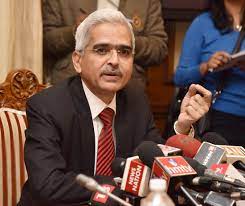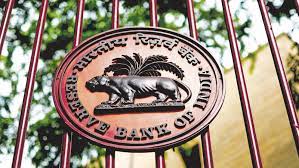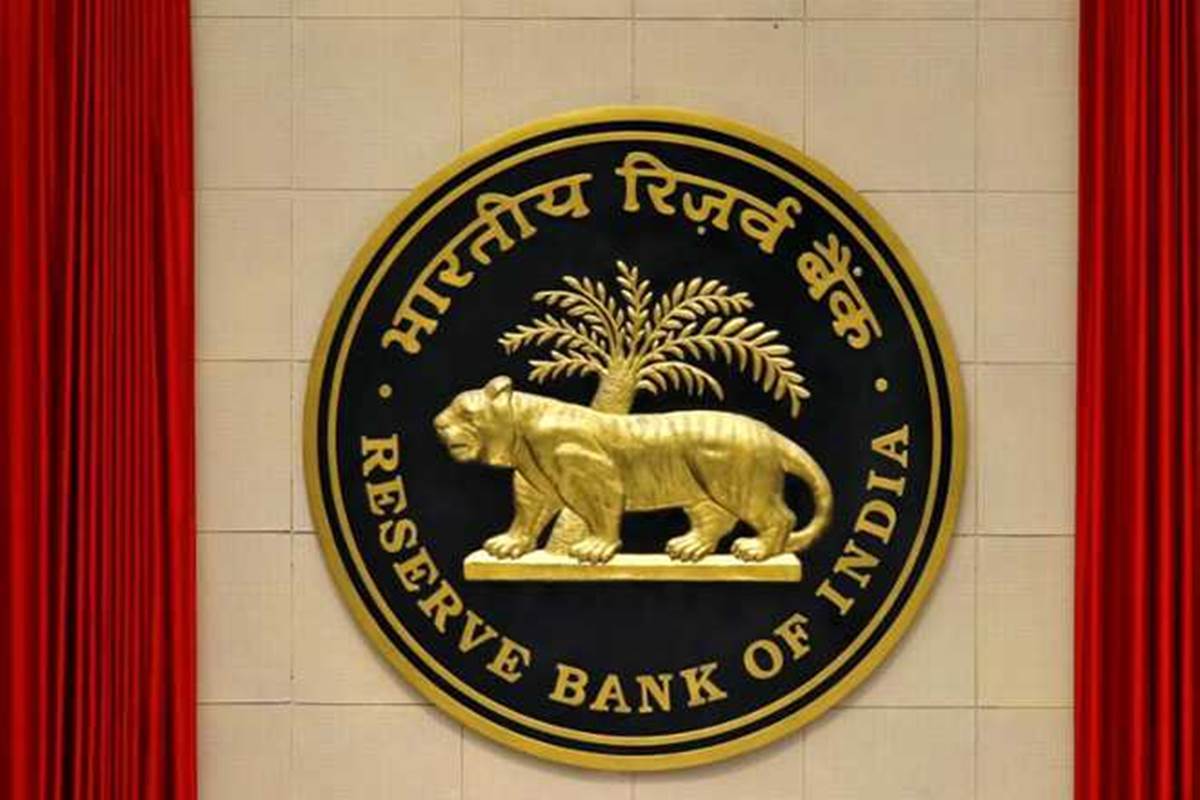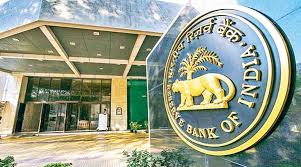RBI Governor Shaktikanta Das explained on the central bank’s decision to retain the repo rate at 6.50%, revise inflation rate projection for FY24 and increase incremental cash reserve ratio (CRR) as a measure to absorb surplus liquidity.
Here in essence is the RBI Governor’s address:
Why repo rate kept unchanged
Headline inflation hit a low of 4.3% in May 2023 but rose in June and, led by vegetable prices, is expected to surge during July-August.
The vegetable price shock may reverse quickly. However, possible El Nino weather conditions along with global food prices need to be watched closely against the backdrop of a skewed south-west monsoon so far. These developments warrant a heightened vigil on the evolving inflation trajectory.
The cumulative rate hike of 250 basis points undertaken by the monetary policy committee (MPC) is working its way into the economy. Nonetheless, domestic economic activity is holding up well and is likely to retain its momentum, despite weak external demand.
Considering this confluence of factors, the MPC decided to remain watchful and evaluate the emerging situation. It, thus, decided to keep the policy repo rate unchanged at 6.50% with preparedness to act, should the situation so warrant. The MPC remains resolute in its commitment to aligning inflation to the 4% target and anchoring inflation expectations.
This is the rationale for also remaining focused on ‘withdrawal of accommodation’ stance. The marginal standing facility (MSF) rate and the bank rate remains untouched at 6.75%.
Inflation should progressively align with the 4% target while supporting growth.
Focus on withdrawal of accommodation explained
During the accommodative phase of monetary policy (February 2019 to March 2022), the weighted average domestic term deposit rate (WADTDR) on fresh deposits of scheduled commercial banks and the weighted average lending rate (WALR) on fresh loans had fallen by 259 basis points and 232 basis points, respectively, in response to the repo rate cut of 250 basis points.
In the recent tightening phase (May 2022 to June 2023), the repo rate has increased by 250 basis points, fully offsetting the reduction in the easing phase.
However, the increase in the WADTDR on fresh deposits and the WALR on fresh loans at 231 basis points and 169 basis points, respectively, trails the reduction seen in these rates during the accommodative phase.
Why India likely to withstand global headwinds
The global economy continues to face daunting challenges of elevated inflation, high levels of debt, tight and volatile financial conditions, continuing geopolitical tensions, fragmentations and extreme weather conditions.
Belying earlier apprehensions, a number of economies have demonstrated remarkable resilience and the grim prospects of hard landing appear to have receded.
Nevertheless, global growth is likely to remain low by historical standards in the current year and next few years, despite the upward revision in the global growth forecast for 2023 by the IMF (International Monetary Fund).
World Trade Organisation (WTO) has projected world merchandise trade volume growth to decelerate from 2.7% in 2022 to 1.7% in 2023.
Headline inflation is easing unevenly across countries and remains above the target in major economies. While the pace of monetary tightening has been scaled down, policy rates could stay higher for longer.
Financial markets, which had been buoyed by expectations of an early end to the cycle of monetary tightening, have turned volatile with sizeable two-way movements in response to recent rating event and incoming data.
These external factors are likely to impinge on the growth prospects of most major advanced and emerging economies. India is, however, expected to withstand these external headwinds far better than many other countries.
The momentum of overall economic activity in India continues to be positive. On the supply side, crop sowing has picked up with steady progress in the south-west monsoon. The temporal and spatial distribution of monsoon has, however, been uneven.
Industrial activity is holding ground as is evident from the latest data on index of industrial production (IIP), core industries output and purchasing managers’ index.
Aggregate demand conditions continue to be buoyant. Among urban demand indicators, domestic air passenger traffic, passenger vehicle sales and households’ credit are exhibiting sustained growth. In the case of rural demand, tractor and fertiliser sales improved in June while two-wheeler sales moderated. High growth in agricultural credit and improving sales volume of major fast moving consumer goods (FMCG) companies suggest incipient recovery in rural demand, which will be reinforced by improving kharif prospects.
Investment activity gained further steam on the back of government capital expenditure, rising business optimism and revival in private capex in certain key sectors. Continued increase in import and production of capital goods further reaffirms this trend. Construction activity also remained strong in Q1 as indicated by healthy growth in cement production and steel consumption.
Capacity utilisation in the manufacturing sector at 76.3% (and 74.1% on seasonally adjusted basis) remained above the long-term average of 73.7%t. The total flow of resources to the commercial sector from banks and other sources taken together has increased by Rs 7.5 lakh crore during the financial year 2023-24 so far (up to July 28) as compared with Rs 5.7 lakh crore a year ago. On the downside, merchandise exports and non-oil non-gold imports contracted further in June and the growth in services exports decelerated amidst slowing external demand.
Looking ahead, these underlying developments and the upcoming festival season are expected to provide support to private consumption and investment activity. The spillovers emanating from weak external demand and protracted geopolitical tensions, however, pose risks to the outlook.
GDP outlook
Taking all these factors into consideration, real GDP growth for 2023-24 is projected at 6.5% with Q1 at 8%; Q2 at 6.5%; Q3 at 6%; and Q4 at 5.7%. Real GDP growth for Q1:2024-25 is projected at 6.6%. The risks are evenly balanced.
Why headline inflation may see substantial increase in near term
The moderation in headline inflation to 4.6% in Q1 of 2023-24 was in line with the projections set out in the June MPC meeting. There was a pick-up in headline inflation to 4.8% in June due to an upturn in food inflation. On the positive side, inflation excluding food and fuel (core inflation) has softened by more than 100 basis points from its recent peak in January 2023.
The month of July has witnessed accentuation of food inflation, primarily on account of vegetables. The spike in tomato prices and further increase in prices of cereals and pulses have contributed to this. Consequently, a substantial increase in headline inflation would occur in the near term.
Going by the past trends, vegetable prices may see a significant correction after a few months. The prospects of kharif crops have brightened, thanks to improvement in the progress of the monsoon. Uncertainties, however, remain on domestic food price outlook due to sudden weather events and possible El Niño conditions in August and beyond. Global food prices are also exhibiting a hardening bias on renewed geopolitical tensions. Crude oil prices have firmed up in recent weeks and its outlook is clouded by demand-supply uncertainties.
Why inflation revised upwards to 5.4% for FY24
Given the continuing uncertainties, our latest CPI inflation projections for 2023-24, assuming a normal monsoon, is revised to 5.4%, with Q2 at 6.2%, Q3 at 5.7% and Q4 at 5.2%. CPI inflation for Q1:2024-25 is projected at 5.2%. The risks are evenly balanced.
Headline inflation projection for Q2 of 2023-24 has been revised up substantially, primarily due to the price shock from vegetables. Given the likely short term nature of these shocks, monetary policy can look through high inflation prints caused by such shocks for some time. The frequent incidences of recurring food price shocks, however, pose a risk to anchoring of inflation expectations, which has been underway since September 2022.
The role of continued and timely supply side interventions assumes criticality in limiting the severity and duration of such shocks. In such circumstances, it is necessary to be watchful of the emerging trends and risks to price stability.
We have to stand in readiness to go beyond keeping Arjuna’s eye to deploying policy instruments, if necessary. I reiterate what I said in my June policy statement: bringing headline inflation within the tolerance band is not enough; we need to remain firmly focused on aligning inflation to the target of 4%.
Why incremental CRR increased
The level of surplus liquidity in the system has gone up in the recent months on the back of return of Rs 2,000 banknotes to the banking system, RBI’s surplus transfer to the government, pick up in government spending and capital inflows. The overall daily absorption under the liquidity adjustment facility (LAF) was Rs 1.7 lakh crore in June and Rs 1.8 lakh crore in July 2023.
Despite such surplus liquidity, market response to RBI’s 14-day variable rate reverse repo (VRRR) auctions was lukewarm; instead, banks preferred to place their surplus liquidity in the less remunerative standing deposit facility (SDF).
Although the fine-tuning VRRR auctions of 1-4 days maturity during this period evoked better response from the market, this essentially reflects greater risk aversion among banks to park large funds under the main operation.
In this context, it is necessary to reiterate that fine-tuning operations (overnight and up to 13 days) are undertaken to deal with special or exceptional situations and cannot become the rule.
In recent years, our stated stance on liquidity is to maintain adequate liquidity in the system to meet the productive requirements of the economy. Excessive liquidity, on the other hand, can pose risks to price stability and also to financial stability. Hence, efficient liquidity management requires continuous assessment of the level of surplus liquidity so that additional measures are taken as and when necessary to impound the element of excess liquidity.
Accordingly, it has been decided that with effect from the fortnight beginning August 12, 2023, scheduled banks shall maintain an incremental cash reserve ratio (I-CRR) of 10% on the increase in their net demand and time liabilities (NDTL) between May 19, 2023 and July 28, 2023.
This measure is intended to absorb the surplus liquidity generated by various factors referred to earlier including the return of Rs 2,000 notes to the banking system.
This is purely a temporary measure for managing the liquidity overhang. Even after this temporary impounding, there will be adequate liquidity in the system to meet the credit needs of the economy. The ICRR will be reviewed on September 8, 2023 or earlier with a view to returning the impounded funds to the banking system ahead of the festival season. I must add that the existing cash reserve ratio (CRR) remains unchanged at 4.5%.
Current account deficit to remain manageable
India’s current account deficit (CAD) was contained at 2% of GDP in 2022-23 as compared with 1.2% in 2021-22.
Merchandise trade deficit has narrowed in Q1 of 2023-24 with contraction in imports exceeding contraction in exports. Services exports and remittances are, however, expected to provide cushion to the current account deficit.
We, therefore, expect CAD to remain eminently manageable during the current financial year also.
External sector financing side
On the financing side, foreign portfolio investment (FPI) flows have remained buoyant in 2023-24 so far. Net FPI inflows have been US$ 20.1 billion up to August 8, 2023 which is the highest since 2014-15. In the corresponding period of the previous year, there were net outflows of US$ 12.6 billion. The inflows under external commercial borrowings also witnessed a turnaround, with net inflows of US$ 6.0 billion during April-June 2023 as against net outflows of US$ 2.9 billion a year ago.
Net foreign direct investment (FDI) flows to India, on the other hand, fell to US$ 5.5 billion during April-May 2023 from US$ 10.6 billion a year ago, reflecting a global slowdown in FDI flows. Latest available data suggest that India’s external debt to GDP ratio improved to 18.9% at end-March 2023 from 20% at end-March 2022.
Indian rupee
The Indian rupee has remained stable since January 2023. Foreign exchange reserves have crossed US$ 600 billion mark. The umbrella has gathered further strength; and I am not saying this in the context of the monsoon rains!







